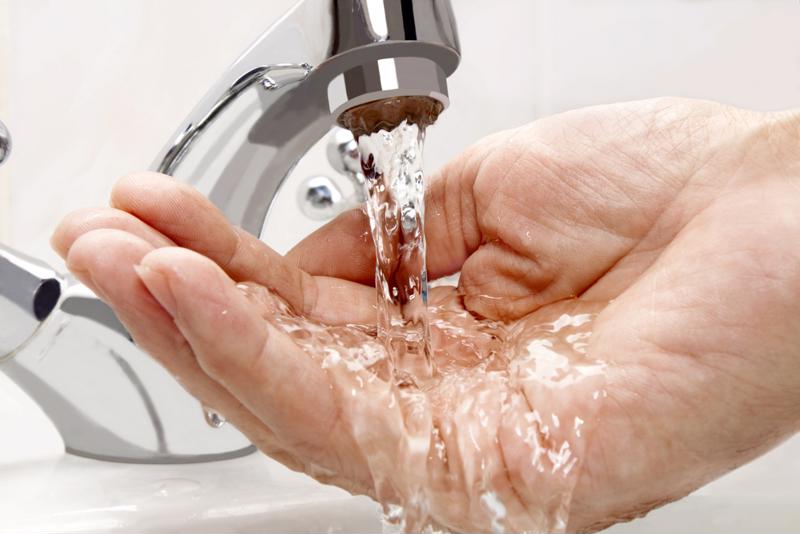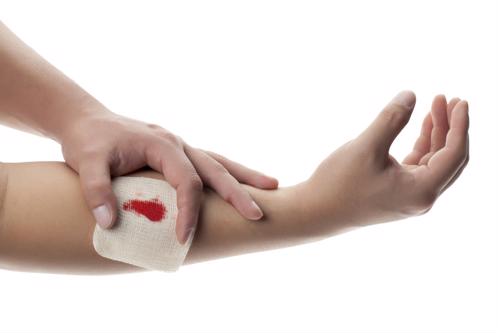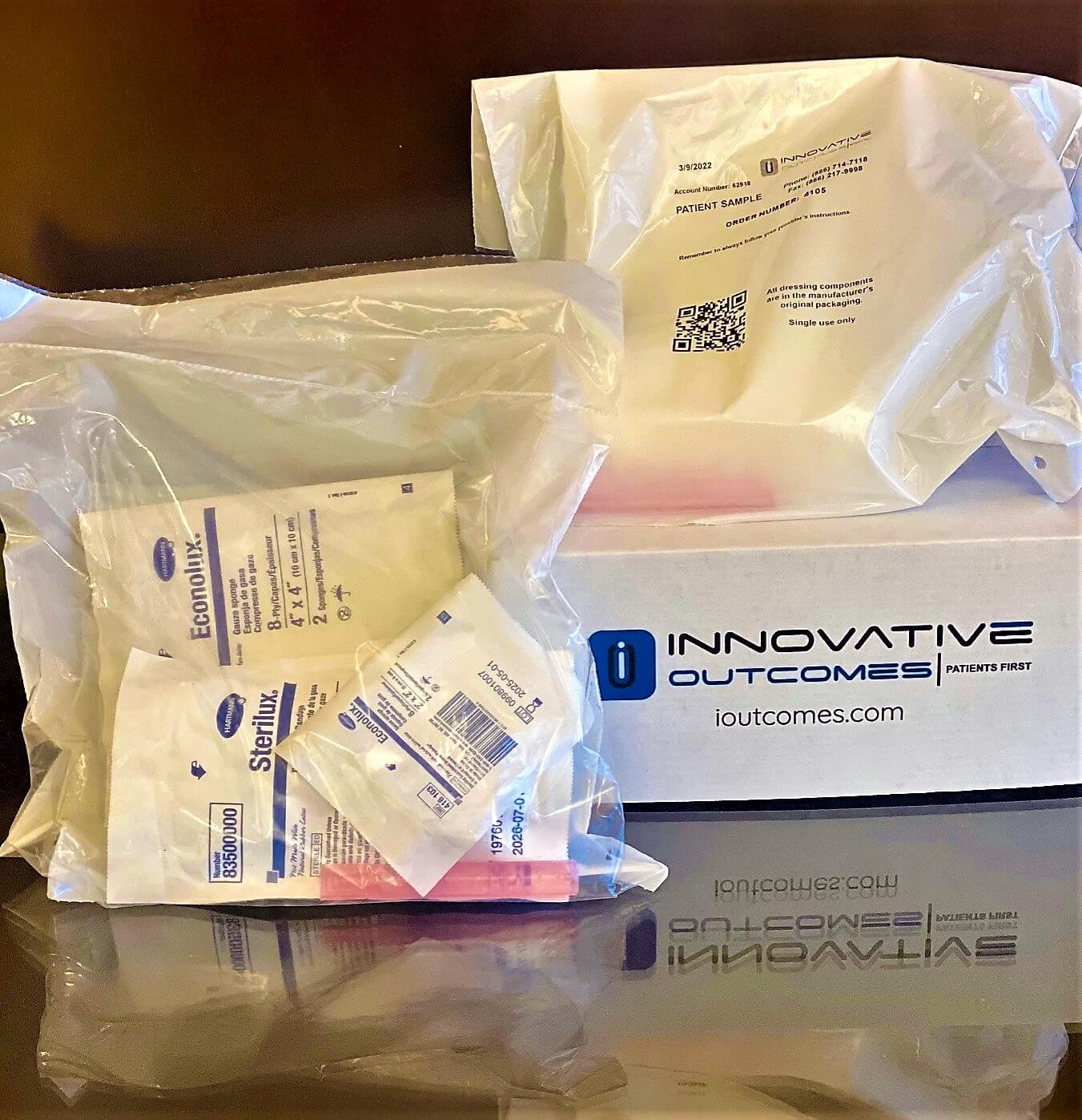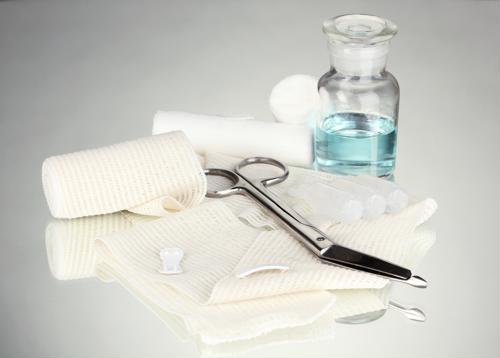Before you run for the bandage, take a few minutes to carefully clean your wound. You’ll thank yourself later, as this not only facilitates healing, but can also prevent infections and other complications. Always remember that your doctor knows best, so make sure to consult with your medical physician for proper guidelines and care if you have any questions about wound care.
Follow these steps for proper wound cleaning:
1. Wash your hands
Never touch wounds without washing and drying your hands thoroughly. Unwashed hands may carry germs, bacteria and dirt that could potentially cause an infection. Double down on safety by wearing disposable gloves if you have them.
2. Stop the bleeding
When cuts or scrapes fail to stop bleeding on their own, apply gentle pressure with a clean bandage or cloth and elevate the wound until it stops. Skip this step for burn wounds or injuries that aren’t bleeding.
 Use freshly washed hands and clean water for safe wound cleaning.
Use freshly washed hands and clean water for safe wound cleaning.3. Rinse the wound
Run clean water over the wound to loosen the skin and remove initial layers of debris. The U.K. National Health Service recommended rinsing for roughly five to 10 minutes. If you have a burn, refrain from using ice cold water, instead keeping it at a cool temperature.
4. Wash around the wound
Cleanse the surrounding skin with mild soap, gently dabbing or swiping with a gauze pad or soft wash cloth. Avoid getting soap in the wound, and refrain from using hydrogen peroxide or iodine because they can irritate the damaged skin, as advised by the Mayo Clinic.
5. Remove debris
Clean a pair of tweezers with alcohol, and then use them to remove any dirt and debris still present in the wound bed. If you can’t remove everything, see your doctor for help.
6. Gently dry
Use a clean cloth to gently pat the skin dry. Don’t use a cotton ball or swab, as pieces of the material may get stuck inside the wound.
7. Bring in the antibiotics
Antibiotic ointments and creams help wounded skin maintain a healthy moisture balance, as well as prevent infection. This step is not always necessary depending on the severity or type of wound, so follow your doctor’s advice for your specific treatment.
8. Cover the wound
Now fresh and clean, the wound is ready for a sterile dressing to keep it protected from the outside world. Minor cuts and scrapes, however, can often be left uncovered.
A helping hand for wound care at home
Proper wound cleansing requires the right supplies, especially for more severe injuries that need frequent dressing changes. Innovative Outcomes offers innovative delivery of those wound care products, conveniently packaged in single-dose portions with easy-to-follow video instructions. Learn more about iPAK today.





